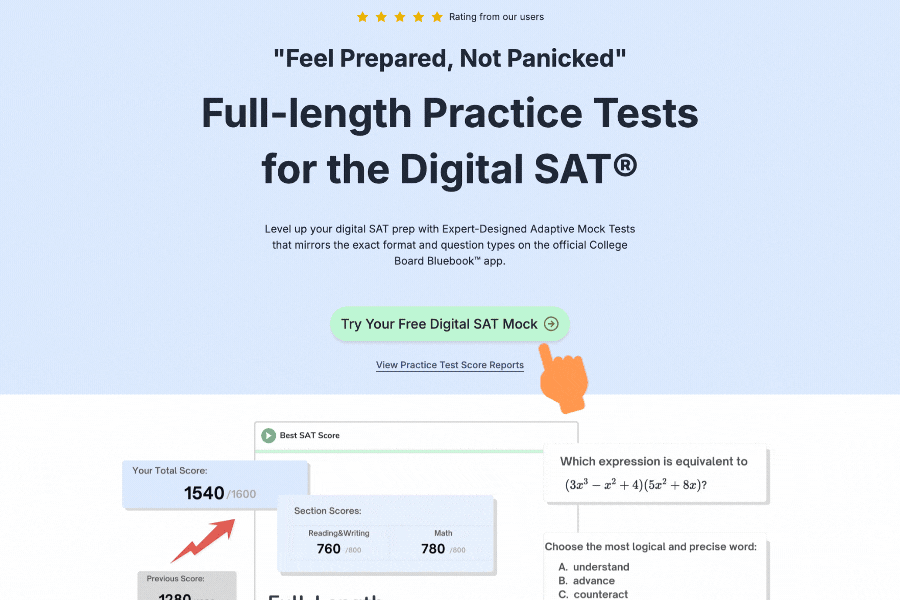1. The Definition Trap
❌ The SAT includes words with multiple meanings, but only one fits the context. Students often pick a familiar definition that doesn't match the passage.
Example:
"The committee held the proposal for further review."
- "Held" can mean physically grasped or delayed.
Correct meaning here: delayed (not grasped).
✅ How to Avoid:
- Treat every word like it's new-ignore what you "think" it means.
- Always verify with surrounding sentences.
2. The Close-But-Wrong Trap
❌ Options seem similar in meaning, but only one perfectly aligns with the passage's logic and tone.
Example:
"The scientist's findings were _____, challenging decades of assumptions."
- A) noteworthy (could fit)
- B) revolutionary (better implies major change)
Correct Answer: revolutionary (matches "challenging decades").
✅ How to Avoid:
- Ask: "Does this word fully capture the impact?"
- Eliminate words that are too weak or vague.
3. The Connotation Mismatch
❌ Words with similar definitions but opposite emotional tones
Example:
"The politician's speech was _____, angering many voters."
- A) passionate (positive)
- B) inflammatory (negative)
Correct Answer: inflammatory (matches "angering").
✅ How to Avoid:
- Find and label key words as + (positive), – (negative), or ✓ (neutral)
- Match the passage's tone (e.g., critical, praising).
4. The Off-Topic Trap
❌ An answer makes sense alone but doesn't relate to the passage.
Example:
"The novel's protagonist faced _____ obstacles."
- A) financial (not mentioned)
- B) emotional (discussed in text)
Correct Answer: emotional (if the passage focuses on feelings).
✅ How to Avoid:
- Cross out answers that introduce new ideas.
- Stick to explicitly supported terms.
5. The Overcomplication Trap
❌ Students pick obscure words when simpler ones fit better.
Example:
"Her argument was _____, leaving no room for debate."
- A) indubitable (rare word)
- B) convincing (clear and precise)
Correct Answer: convincing (SAT prefers straightforward language.).
✅ How to Avoid:
- Favor clarity over complexity.
- If two options work, choose the more common word.
6. The "Almost Synonyms" Trap
❌ Words that seem interchangeable but have subtle differences.
Example:
"The data was _____, with no errors detected."
- A) flawless (100% perfect)
- B) accurate (correct but not necessarily perfect)
Correct Answer: flawless (matches "no errors").
✅ How to Avoid:
- Use the elimination method to spot tiny differences.
- Ask: "Which word is stricter/more exact?"
